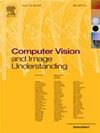An effective CNN and Transformer fusion network for camouflaged object detection
IF 3.5
3区 计算机科学
Q2 COMPUTER SCIENCE, ARTIFICIAL INTELLIGENCE
引用次数: 0
Abstract
Camouflage object detection aims to identify concealed objects in images. Global context and local spatial details are crucial for this task. Convolutional neural network (CNN) excels at capturing fine-grained local features, while Transformer is adept at modeling global contextual information. To leverage their respective strengths, we propose a novel CNN-Transformer fusion network (CTF-Net) for COD to achieve more accurate detection. Our approach employs parallel CNN and Transformer branches as an encoder to extract complementary features. We then propose a cross-domain fusion module (CDFM) to fuse these features with cross-modulation. Additionally, we develop a boundary-aware module (BAM) that combines low-level edge details with high-level global context to extract camouflaged object edge features. Furthermore, we design a feature enhancement module (FEM) to mitigate background and noise interference during cross-layer feature fusion, thereby highlighting camouflaged object regions for precise predictions. Extensive experiments show that CTF-Net outperforms the existing 16 state-of-the-art methods on four widely-used COD datasets. Especially, compared with all the comparison models, CTF-Net significantly improves the performance by 5.1% (F-measure) on the NC4K dataset, showing that CTF-Net could accurately detect camouflaged objects. Our code is publicly available at https://github.com/zcc0616/CTF-Net.
一种用于伪装目标检测的有效CNN和Transformer融合网络
伪装目标检测的目的是识别图像中隐藏的目标。全局背景和局部空间细节对这项任务至关重要。卷积神经网络(CNN)擅长于捕获细粒度的局部特征,而Transformer擅长于建模全局上下文信息。为了利用两者各自的优势,我们提出了一种新的CNN-Transformer融合网络(CTF-Net)来实现更准确的COD检测。我们的方法采用并行CNN和Transformer分支作为编码器来提取互补特征。然后,我们提出了一个跨域融合模块(CDFM)来融合这些特征与交叉调制。此外,我们开发了一个边界感知模块(BAM),该模块将低级边缘细节与高级全局上下文相结合,以提取伪装对象的边缘特征。此外,我们设计了一个特征增强模块(FEM)来减轻跨层特征融合过程中的背景和噪声干扰,从而突出伪装的目标区域以进行精确预测。大量的实验表明,CTF-Net在四个广泛使用的COD数据集上优于现有的16种最先进的方法。特别是,与所有比较模型相比,CTF-Net在NC4K数据集上的性能显著提高了约5.1% (F-measure),这表明CTF-Net可以准确地检测伪装目标。我们的代码可以在https://github.com/zcc0616/CTF-Net上公开获得。
本文章由计算机程序翻译,如有差异,请以英文原文为准。
求助全文
约1分钟内获得全文
求助全文
来源期刊

Computer Vision and Image Understanding
工程技术-工程:电子与电气
CiteScore
7.80
自引率
4.40%
发文量
112
审稿时长
79 days
期刊介绍:
The central focus of this journal is the computer analysis of pictorial information. Computer Vision and Image Understanding publishes papers covering all aspects of image analysis from the low-level, iconic processes of early vision to the high-level, symbolic processes of recognition and interpretation. A wide range of topics in the image understanding area is covered, including papers offering insights that differ from predominant views.
Research Areas Include:
• Theory
• Early vision
• Data structures and representations
• Shape
• Range
• Motion
• Matching and recognition
• Architecture and languages
• Vision systems
 求助内容:
求助内容: 应助结果提醒方式:
应助结果提醒方式:


